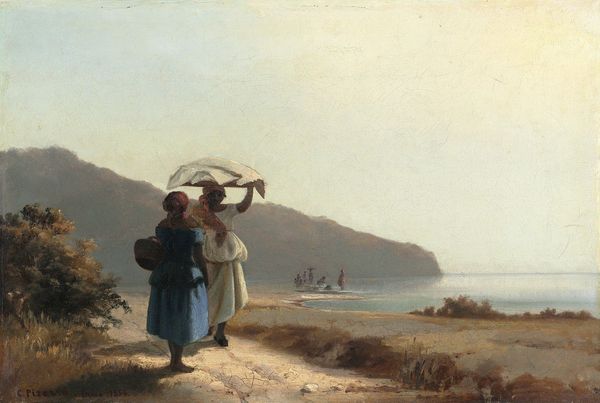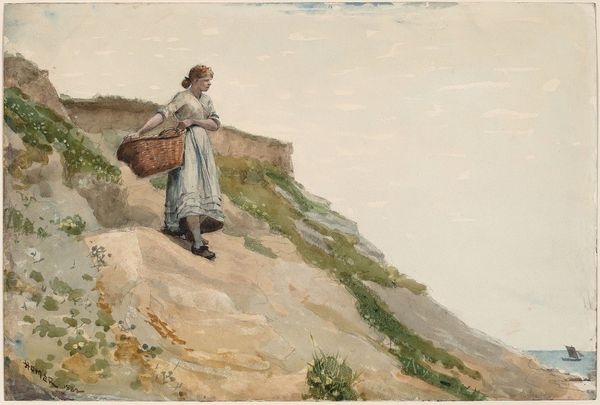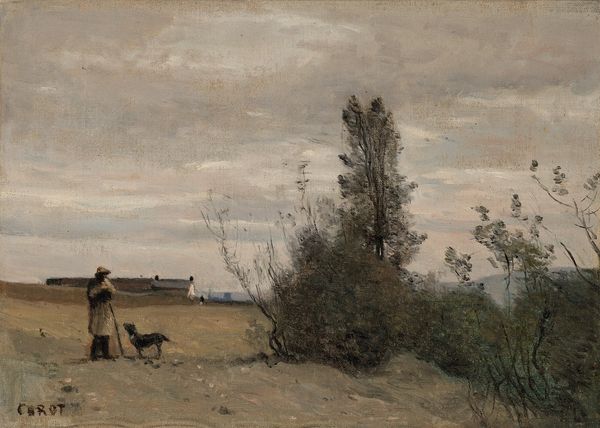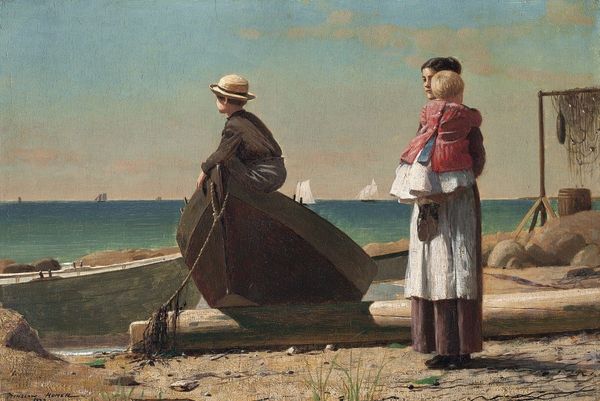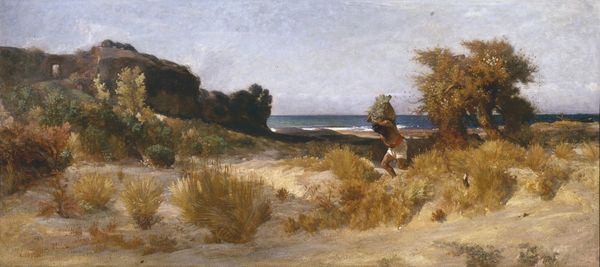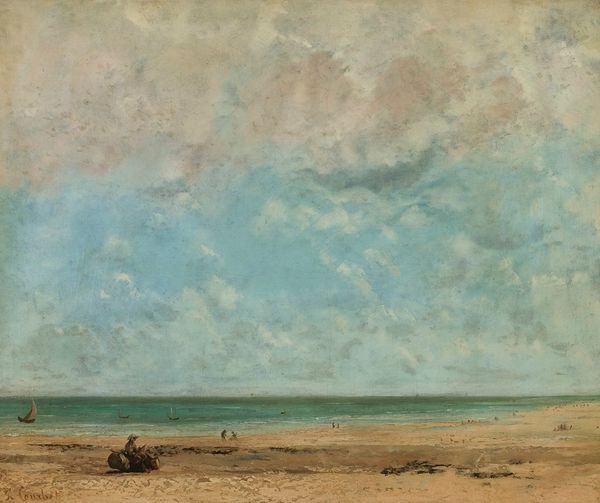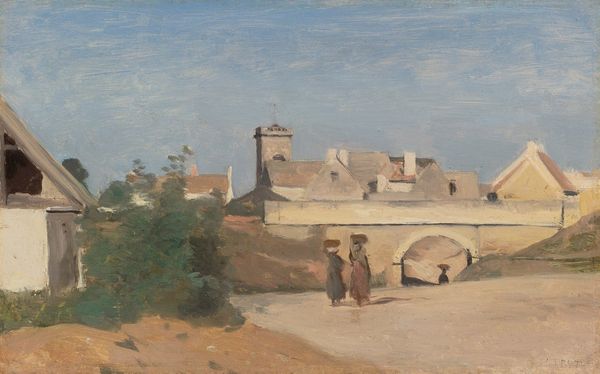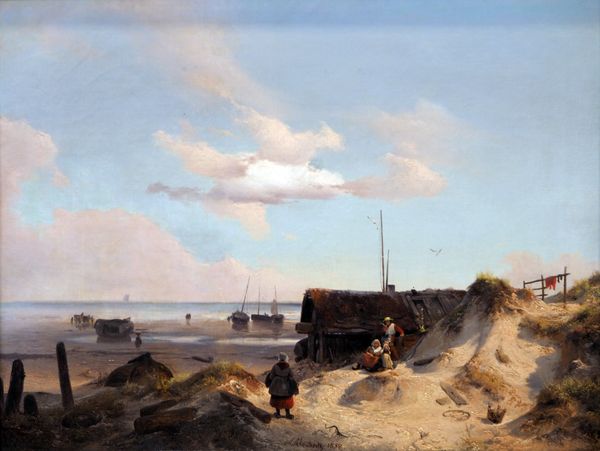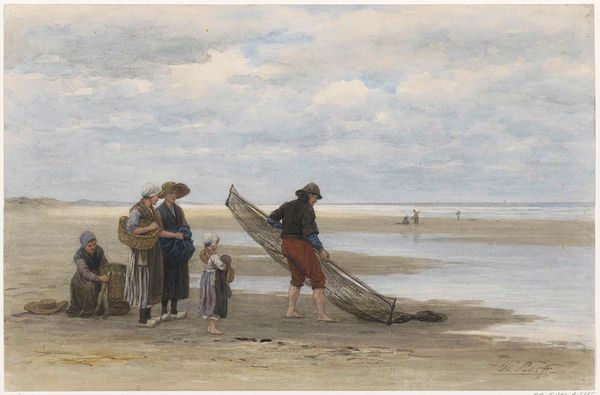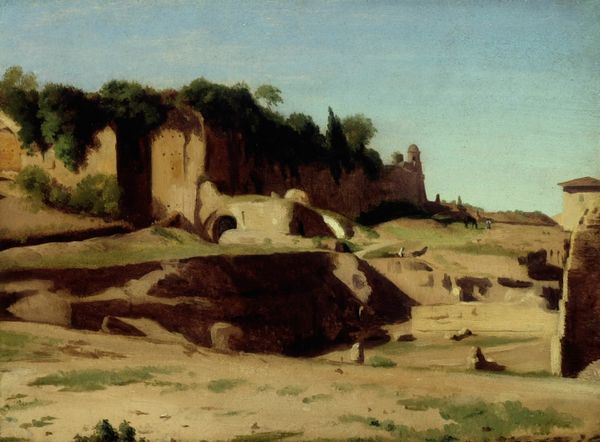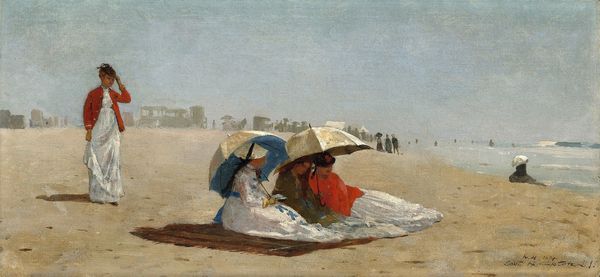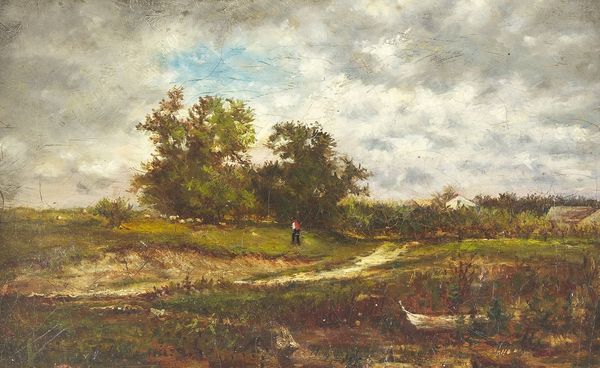
Copyright: Public domain
Editor: Here we have Vincenzo Cabianca’s “Seafront,” painted in 1860. It’s an oil painting that really strikes me with its serene atmosphere. What do you see in this piece, beyond the obvious? Curator: Observe how Cabianca uses horizontal and vertical lines to create a sense of order. The sea and sky are broad, tranquil bands, contrasting with the verticality of the standing figure and implied vertical thrust of the foliage on the right. Note how the formal components underscore the contrast between the human figure against the landscape's expansive vista. Editor: I do notice the woman creates an implied visual division; does that bisecting disrupt or enhance the piece’s calm? Curator: An excellent observation. Semiotically, we might view her as a signifier. The dark mass of the figure creates a repoussoir effect, directing the viewer's gaze deeper into the pictorial space. Also consider the dynamic tension between light and shadow—the shadow cast by the figure echoes her form. This establishes visual harmony through repetition, without overtly disturbing the composition. Editor: It seems everything balances on the picture plane. What is the impact of this arrangement? Curator: The painting is neither sentimental nor symbolic; it is an arrangement of visual forms that interact, producing meaning within a system of relationships on the flat surface of the canvas. Editor: I see now that the careful arrangements of shapes and forms, as opposed to symbolic meanings, is the emotional key. Curator: Precisely. Through visual analysis, we can come to appreciate the aesthetic intentionality within. The painting gives primacy to the formal elements over historical readings. Editor: Thanks, I learned new perspective to interpret the art with composition instead of context.
Comments
No comments
Be the first to comment and join the conversation on the ultimate creative platform.
